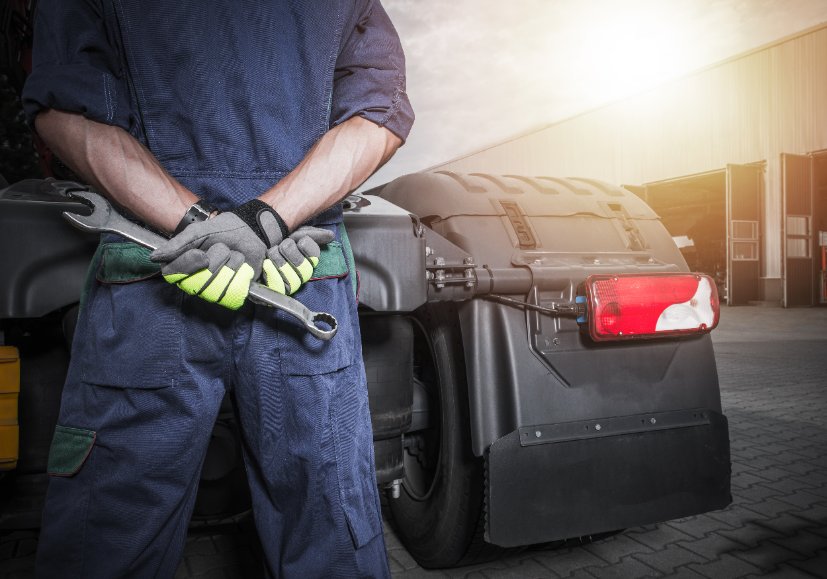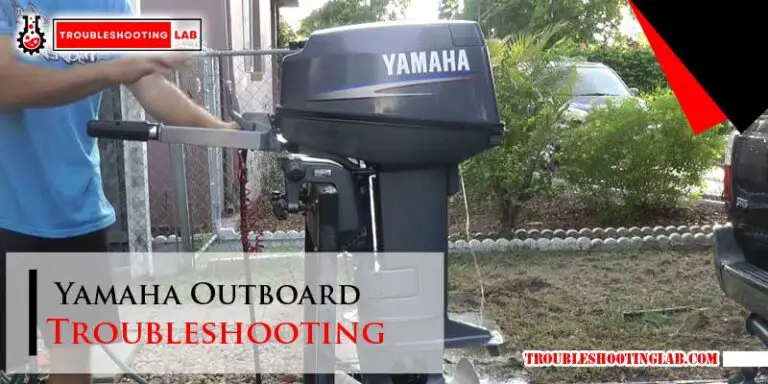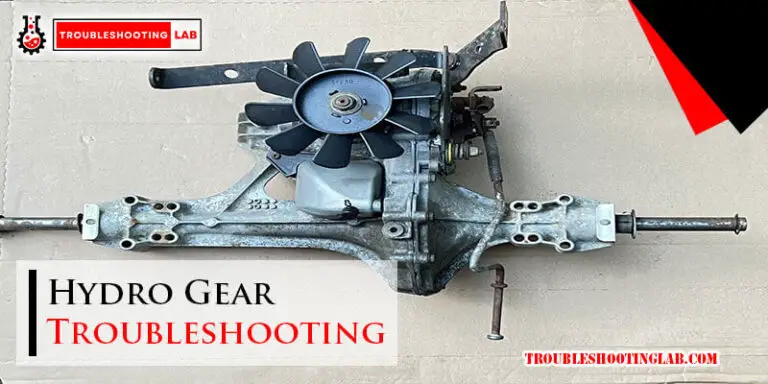Hydraulic Liftgate Troubleshooting: Expert Tips for Quick Fixes
Hydraulic liftgates are vital for many businesses. They ensure smooth loading and unloading of goods.
Yet, like any machinery, they can encounter issues. Understanding hydraulic liftgate troubleshooting can save time and money. This blog will guide you through common problems and solutions. We aim to make the process less daunting. Whether it’s a minor glitch or a major fault, knowing the basics helps.
Regular maintenance and prompt attention to issues can extend the life of your liftgate. Stay tuned as we explore practical tips and insights. Your liftgate’s efficiency and longevity depend on how well you address these challenges. Let’s dive into the essentials of keeping your hydraulic liftgate in top shape.

Credit: www.texhyd.com
Common Issues
Hydraulic liftgates are essential for many businesses. They help in loading and unloading heavy items. But, they can face some common issues. Understanding these issues can save time and money.
Liftgate Won’t Raise Or Lower
One of the most common problems is when the liftgate won’t raise or lower. Here are some possible reasons:
- Low Hydraulic Fluid: Check the hydraulic fluid level. Low fluid can cause the liftgate to stop working.
- Battery Issues: Ensure the battery is charged and the connections are clean.
- Damaged Wiring: Inspect the wiring for any cuts or damage.
- Faulty Switch: The control switch might be malfunctioning. Test it and replace if necessary.
Unusual Noises
Unusual noises from the liftgate can indicate underlying issues. Here are some potential causes:
- Air in Hydraulic Lines: Air bubbles can create strange sounds. Bleed the lines to remove air.
- Worn-out Components: Check for any worn-out parts like bearings or gears.
- Insufficient Lubrication: Ensure all moving parts are well-lubricated to avoid friction.
- Loose Bolts: Tighten any loose bolts and screws that may cause rattling noises.
Regular maintenance can prevent most issues. Always follow the manufacturer’s guidelines for best results.
Safety Precautions
Troubleshooting a hydraulic liftgate requires a focus on safety. Following safety precautions can prevent accidents and injuries. This section highlights essential safety measures to follow.
Wearing Protective Gear
Always wear protective gear before starting any work on a hydraulic liftgate. This includes gloves, safety glasses, and steel-toed boots. These items protect against sharp edges, debris, and heavy objects. They provide a barrier between you and potential hazards.
Securing The Liftgate
Ensure the liftgate is secure before beginning any troubleshooting. Use support stands or blocks to hold it in place. This prevents it from moving unexpectedly. An unstable liftgate can cause serious injury. Double-check the stability before proceeding with any work.
Initial Inspections
Hydraulic liftgate issues can be frustrating. To fix them, start with some initial inspections. These checks can identify common problems. This step saves you time and effort.
Checking Hydraulic Fluid Levels
First, check the hydraulic fluid levels. Low fluid can cause many issues. Locate the reservoir and inspect the fluid level. Use the dipstick or sight glass for this task. If the fluid is low, refill it to the recommended level. Always use the correct type of hydraulic fluid. Check the owner’s manual for this information.
After refilling, operate the liftgate. Observe how it functions. If the problem persists, move to the next step.
Inspecting For Leaks
Next, inspect the system for leaks. Leaks can lead to low hydraulic pressure. This affects the liftgate’s performance. Look for any signs of fluid around the hydraulic lines. Check the connections and fittings. Pay attention to wet spots or puddles. These indicate a leak.
If you find any leaks, tighten the connections. In case of damaged lines or fittings, replace them. Regular inspections can prevent major issues.
Electrical System Checks
When troubleshooting a hydraulic liftgate, checking the electrical system is crucial. The electrical system ensures the liftgate operates smoothly. Problems in this system can cause the liftgate to fail. Two key areas to examine are battery connections and the fuse and relay.
Battery Connections
Start with the battery connections. Ensure they are clean and tight. Loose or corroded connections can disrupt power flow. Use a wire brush to clean any corrosion. Tighten all connections to ensure a stable power supply. Check the battery voltage using a multimeter. A healthy battery should read around 12.6 volts. If the voltage is low, consider charging or replacing the battery.
Fuse And Relay Inspection
Next, inspect the fuse and relay. Locate the fuse box. Refer to the manual for the correct fuse and relay. Remove the fuse and check for any signs of damage. A blown fuse will have a broken wire inside. Replace any blown fuses with the correct type. Examine the relay by listening for a clicking sound when activated. No sound means the relay may be faulty. Swap the relay with a similar one to test its functionality.
Hydraulic System Maintenance
Maintaining a hydraulic liftgate is essential for smooth operation and safety. Regular upkeep ensures the system runs efficiently, reducing the risk of breakdowns. This section will guide you through two vital maintenance tasks: bleeding the hydraulic lines and replacing hydraulic fluid.
Bleeding The Hydraulic Lines
Air trapped in hydraulic lines can cause operational issues. Bleeding the lines removes this air, ensuring the system works correctly. Follow these steps to bleed the hydraulic lines:
- Locate the bleeder valve on the hydraulic system.
- Place a container under the valve to catch any fluid.
- Use a wrench to open the bleeder valve slightly.
- Operate the liftgate to push air out of the system.
- Close the valve once fluid flows steadily without air bubbles.
Repeat these steps for each hydraulic line in the system. Regularly bleeding the lines keeps the hydraulic system in top condition.
Replacing Hydraulic Fluid
Hydraulic fluid plays a crucial role in the operation of the liftgate. Over time, the fluid can degrade, reducing efficiency. Replacing it regularly ensures optimal performance. Follow these steps to replace the hydraulic fluid:
- Park the vehicle on a level surface and turn off the engine.
- Locate the hydraulic fluid reservoir.
- Place a container under the drain plug to catch old fluid.
- Remove the drain plug and allow the fluid to drain completely.
- Replace the drain plug and fill the reservoir with new hydraulic fluid.
- Check for leaks and ensure the fluid level is correct.
Use the recommended hydraulic fluid for your liftgate model. Regular fluid replacement enhances the longevity and efficiency of the hydraulic system.

Credit: 2fe1gz4ue0mj.com
Mechanical Component Review
Hydraulic liftgates are essential for many industries, providing efficiency and ease of use. Over time, mechanical components can wear down. Regularly reviewing these parts is crucial to maintaining performance. This section covers key mechanical components to inspect.
Inspecting Liftgate Hinges
Liftgate hinges bear significant weight and movement. Check for visible wear and tear. Look for rust, cracks, or loose bolts. Ensure hinges move smoothly without excessive play. Lubricate hinges regularly to prevent rust and ensure smooth operation. Replace any damaged hinges promptly.
Assessing Cylinder Functionality
Hydraulic cylinders are vital for lifting and lowering the gate. Inspect cylinder surfaces for dents or leaks. Ensure connections are tight and secure. Test the cylinder by operating the liftgate. Listen for unusual noises or signs of strain. Check hydraulic fluid levels regularly. Low fluid can indicate a leak or other issue.
Troubleshooting Controls
Hydraulic liftgate issues can be frustrating. Troubleshooting the controls is key. Control problems are often the culprit. Addressing them can restore proper function. This guide covers two main areas: testing control switches and inspecting wiring connections.
Testing Control Switches
Begin with the control switches. They are essential for liftgate operation. Ensure each switch functions correctly. First, check for physical damage. Damaged switches can cause malfunctions. Next, use a multimeter to test continuity. No continuity? Replace the switch. This ensures the liftgate receives proper signals.
Inspecting Wiring Connections
Wiring connections play a crucial role. Faulty connections disrupt the liftgate’s operation. Start by visually inspecting all wires. Look for signs of wear or damage. Damaged wires need replacement. Secure all connections tightly. Loose connections can cause intermittent issues. Use a multimeter to test for continuity. Check each wire from the switch to the liftgate motor. Proper continuity ensures electrical flow.
By focusing on these areas, you can resolve many control-related issues. Regular maintenance and inspections help keep your hydraulic liftgate functioning smoothly.
Professional Help
If you have tried all troubleshooting steps and your hydraulic liftgate still does not work, it is time to seek professional help. A certified technician can diagnose and fix complex issues. They have the right tools and expertise to get your liftgate back in working order.
When To Contact A Technician
Several signs suggest you need a technician. If your liftgate makes strange noises, it may need professional attention. Unusual sounds often indicate mechanical problems. Furthermore, if the liftgate moves slowly or stops mid-operation, it is best to call a technician. These issues can stem from hydraulic system failures or electrical faults.
| Signs You Need a Technician |
|---|
| Strange noises |
| Slow movement |
| Stops mid-operation |
| Hydraulic fluid leaks |
| Electrical issues |
Finding A Reliable Service Center
Finding a trustworthy service center ensures the best care for your liftgate. Begin by asking for recommendations from friends or colleagues. Online reviews can also be helpful. Look for centers with high ratings and positive feedback. Check if the service center is certified by the liftgate manufacturer. This certification ensures they use genuine parts and follow proper repair procedures.
Consider the convenience of the service center’s location. A nearby center saves time and effort. Check their availability. Ensure they can accommodate your schedule. Finally, compare pricing but remember that the lowest price is not always the best choice. Quality service is crucial for the longevity of your liftgate.
- Seek recommendations
- Read online reviews
- Check certifications
- Consider location and availability
- Compare pricing

Credit: www.youtube.com
Frequently Asked Questions
Why Is My Hydraulic Liftgate Not Working?
A hydraulic liftgate may not work due to low fluid levels, electrical issues, or mechanical failure.
How Do I Check Hydraulic Fluid Levels?
Locate the fluid reservoir. Check the fluid level using the dipstick. Refill if necessary.
What Causes A Hydraulic Liftgate To Leak?
Leaks can be caused by worn seals, damaged hoses, or loose connections. Inspect and replace faulty parts.
Can Cold Weather Affect Hydraulic Liftgate Performance?
Yes, cold weather can cause hydraulic fluid to thicken, leading to slower or less effective liftgate operation.
What Should I Do If My Liftgate Is Noisy?
Noise may indicate air in the hydraulic system or worn components. Bleed the system and inspect for wear.
Conclusion
Troubleshooting a hydraulic liftgate can seem daunting at first. Identify the issue. Check the manual. Follow these steps. You can fix many problems yourself. Regular maintenance prevents most issues. Keep your liftgate in good shape. Safety is crucial. Always follow guidelines.
Don’t ignore small problems. They can become big. For tough issues, seek professional help. Stay informed. Ensure your liftgate runs smoothly.






